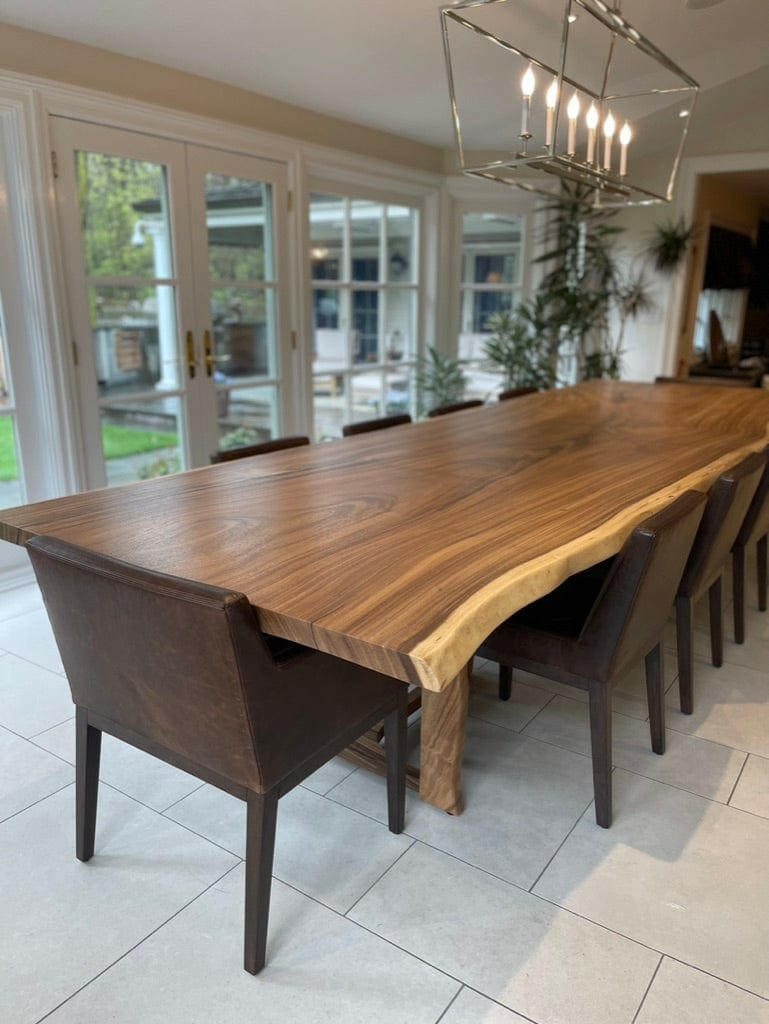An In-depth Consider Table Leg Styles: Locating the Suitable Match
Selecting the ideal table leg design is important for both aesthetic allure and functional functionality. Conventional 4 legs use timeless style and security, while the stand base offers raised legroom and a contemporary look. For those with bigger tables, trestle legs guarantee strong support, whereas barrette legs introduce a mid-century modern-day vibe with their minimal style. The x-shaped legs blend modern style with boosted stability. Each of these alternatives brings distinct advantages, making the option more than simply a matter of choice. Discover additionally to discover which design flawlessly matches your eating area and way of living.
Traditional Four Legs
Among the different kinds of table leg designs, the traditional four-leg style stays a classic selection for several households. This classic setup supplies an unified mix of capability and aesthetic appeals, making it a seasonal fave. 4 legs provide balanced assistance, making certain the table continues to be secure and qualified of birthing significant weight. This is specifically advantageous for households that frequently organize huge gatherings or utilize their eating table for numerous objectives, such as job or crafting.
From an aesthetic perspective, the traditional four-leg style can be easily adjusted to different interior designs. Whether crafted from timber, metal, or a mix of products, these legs can be elaborately carved, streamlined and minimalistic, or anything in between. Their convenience enables them to complement both rustic and modern setups flawlessly.
Additionally, the straightforward framework of the four-leg style helps with convenience of activity and positioning within a room. Unlike even more facility bases, this style decreases obstructions, offering ample legroom for restaurants. In summary, the typical four-leg table leg style marries enduring style with sensible functionality, making it a sharp option for those looking for both type and function in their dining furnishings.
Pedestal Base
Frequently commemorated for its classy and space-efficient design, the pedestal base is a prominent choice to the traditional four-leg configuration in dining table leg styles. Without edge legs, restaurants are managed better freedom of movement, making it a suitable selection for round and oblong tables that advertise even more intimate and comprehensive celebrations.
The main column itself supplies a canvas for detailed styles and artistic expressions, including an aspect of visual passion underneath the table. In summary, the stand base integrates functionality with design, making it a fine-tuned and practical option for diverse eating environments.
Trestle Legs
Trestle legs give a robust and classic foundation for dining tables, characterized by their straight cross-bracing and sturdy assistance beams. Stemming from medieval times, this style has advanced yet preserved its necessary structure, making it a seasonal favorite in both standard and modern settings. The central trestle light beam, typically sustained by two or even more vertical posts, uses remarkable security, permitting larger table sizes read the article without the requirement for additional legs.
A substantial advantage of trestle leg tables is the adequate legroom they supply. Unlike tables with four corner legs, the absence of obstructions at the table's sides supplies unblocked space for chairs and diners, boosting comfort and accessibility. This makes trestle tables suitable for accommodating larger events, whether in a dining-room or a banquet hall.
The visual flexibility of trestle legs is notable. Readily available in a selection of materials such as wood, metal, and composite, they can be ended up to complement a vast array of indoor designs. From rustic farmhouse to smooth modern layouts, trestle legs can be customized to suit individual tastes. Their enduring charm and practical advantages make trestle legs an engaging choice for those seeking both style and functionality in their table.
Hairpin Legs

The allure of hairpin legs exists in their simplicity and flexibility - dining room table legs. Readily available in a range of materials, consisting of steel and brass, they can be finished in countless colors to match various indoor designs. Whether matched with a rustic wood tabletop or a modern glass surface area, barrette legs effortlessly blend performance with a touch of classic beauty
Toughness is another noteworthy function of barrette legs. Regardless of their fragile look, these legs are crafted to birth significant weight, guaranteeing the dining table stays steady and safe and secure. In addition, they are fairly very easy to mount, making them a preferred choice for DIY enthusiasts and professional furniture manufacturers alike.
X-Shaped Legs

Constructed from materials such as steel, timber, or a combination of both, X-shaped legs can be tailored to match numerous design preferences. Steel legs often lend a smooth and commercial feel, perfect for loft-style homes and contemporary eating spaces. On the other hand, wooden X-shaped legs supply a warmer, a lot more rustic allure, suitable for farmhouse or eclectic insides. The versatility in materials allows house owners to tailor their table to better fit their general layout scheme.
Moreover, the engineering behind X-shaped legs makes certain even weight distribution, reducing the danger of tottering and improving longevity. This makes them particularly fit for bigger eating tables that call for added assistance. In significance, X-shaped legs mix sensible design with modern appearances, making them a classic selection for varied eating atmospheres.
Final Thought
A detailed understanding of table leg styles reveals the distinct characteristics and benefits of each layout. Typical 4 legs provide stability and timeless appeal, while stand bases supply legroom and a structured appearance. Trestle legs ensure durable support my latest blog post for larger tables, and barrette legs present a mid-century contemporary aesthetic. X-shaped legs combine modern style with boosted security. Choosing the suitable leg style makes certain both useful and aesthetic complete satisfaction in any dining space.
Comments on “Personalized Dining Room Table Legs: A Stylish Enhancement to Any Kind Of Home”